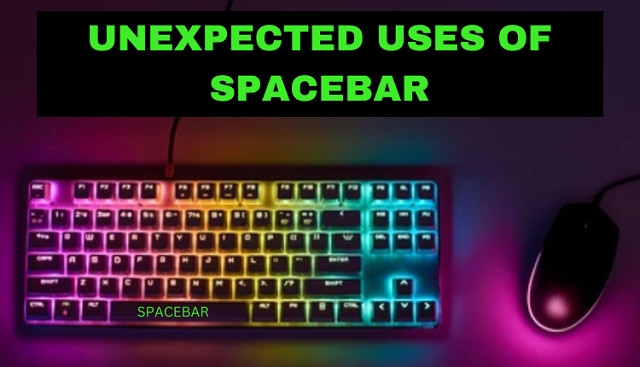
640x367 |
640x367 |
120x69 |
75x75
 spacebar
Image
Posted Dec.13th, 2022, viewed 708 times
spacebar
Image
Posted Dec.13th, 2022, viewed 708 times
Five Unexpected Uses For The Spacebar
Ancient Greek and Latin writings had no spaces between words; you just had to be familiar with where words started and stopped in order to read textlikethis.
But we should be grateful to the spacebar for more than just its sacred word-separation calling because it can also perform quite a few tricks in various environments.
1. Play And Pause
In any application that provides Play and Pause controls, you can use the spacebar to alternately play and pause the content.
This includes movies and slideshows, as well as audio-only files such as those you play in Apple’s iTunes and GarageBand.
2. Open Spring-loaded Folders Instantly
Spring-loaded folders are one of OS X’s most-overlooked timesavers.
In the Finder, drag an item, hover over a folder with it, and after a brief pause (so the Mac knows you’re not simply hesitating before dropping the item in) a Finder window springs open, revealing the folder’s contents.
This makes it easy to see that you’re moving or copying an item into the correct place if your folder names are less than descriptive.
It also simplifies getting into subfolders, because you can continue the hover-and-spring procedure into further folders. But you can skip the pause when you’re hovering over a folder: press the spacebar for instant springing.
Spring-loaded folders work from the Dock, too, so you don’t have to drop an item blindly into a closed docked folder. Press the spacebar to avoid the hover time here, too.
Even if you turn off the spring-loaded folders feature by going to Finder -> Preferences and unchecking the Spring-loaded Folders And Windows setting, pressing the spacebar still springs open a folder when you hover over it holding an item.
3. Access Screenshot Options
When you need to document some aspect of your Mac’s behavior, a screenshot of the full screen is seldom necessary.
Sure, you can press Command-Shift-4 to select an area to capture to the Desktop (Command-Shift-3 saves the whole screen as a file on the Desktop), but if you add the spacebar you’ll access more options.
Pressing the spacebar before you drag across an area to capture it changes your cursor to a camera and lets you select an entire window or a dialog box with a click.
Press the spacebar after you’ve dragged a selection rectangle—but before you let it go—and you can move the selection rectangle around on the screen to adjust its position before capturing the shot; let go of the spacebar with the mouse button still down if you want to adjust the size of the rectangle after you’ve moved it.
4. Zoom In On Windows In Mission Control
Mission Control displays miniatures of all your open windows, grouped by application; what’s left of Exposé in Lion shows all the windows for a specific application. (Set keyboard shortcuts for these features in Keyboard or Mission Control preferences; set other triggers in the Trackpad or Mouse preference pane.)
You can’t always see the contents of a miniature window sufficiently to decide whether it’s the one you want.
But select a window by simply pointing to it—you’ll see a blue frame around the current selection—and then press the spacebar to zoom it up to an easily readable size.
Note that this is not the same as a Quick Look window, which shows you the contents of a file and lets you open it; this shows you a window.
Pressing the spacebar again shrinks the window down to its petite self. (Pressing Esc while the window’s enlarged switches you into its parent app and brings that window to the front.)
5. “Click” On Items Using The Keyboard
Do you prefer to move around in dialog boxes or Web pages using the keyboard instead of the mouse? Go to the
Keyboard Shortcuts pane in Keyboard Preferences and select All Controls under Full Keyboard Access.
With All Controls active, a press of the Tab key selects, in turn, every component of whatever you’re working in—a dialog box, for example. Once you’ve selected a component, press the spacebar instead of a click.
So, for instance, with All Controls on, tabbing around on a Web page includes not only the search and other text fields on a form but all its clickable spots, while the spacebar “clicks” the selected item.
Conclusion
With All Controls turned on in the Keyboard Shortcuts preference pane, tab to a menu (the blue halo shows it’s selected), and use the spacebar to open it.
Use an arrow key to highlight a menu choice, and then use the spacebar again to trigger the command.
Community Critique
This work has not yet received a critique from members of the Drawspace community. Check back soon!